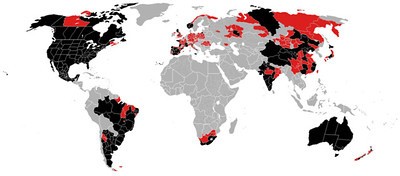
It's not ordinary and frequent that a respiratory illness becomes the main topic of conversations, discussions, and arguments in the United States.
However, the new coronavirus (COVID-19), has undoubtedly reached that status. Today, this killer illness was even declared a worldwide pandemic by the World Health Organization.
The virus, which first came from China, has infected so far, over 115,800 people globally, including at 1,000 here in the U.S., and killed over 4,200 people worldwide. This was according to the latest number reported by CNN.
And, while WHO originally classified COVID-19 as an epidemic end of January, the virus has now exceeded that status. With WHO officially declaring it now as a pandemic, alarm has come to many people in the world. But, does everyone really know what the word "pandemic" means?
How different is it from an epidemic, and should there be necessary actions need to be taken already? These are probably the questions many people ask today that the WHO's declaration has officially come out. More often than not, most people think pandemic and epidemic are similar words and can be used interchangeably.
Pandemic Vs. Epidemic
There's so much confusion about the real meaning of a pandemic. According to Sandra Kesh, MD, a deputy medical director at Westmed Medical Group in Purchase in New York, WHO may have called the shots on the declaration of a 'pandemic' outbreak, however, people should be "careful about doing so, since they don't want the public to unnecessarily fear what's really going on."
A pandemic, Dr. Kesh explained, "essentially meets three criteria." It should have sustained a spread, person-to-person; it should cause illness, including death; and it should affect a large number of individuals with a global spread.
WHO said on its website, there are six phases of pandemic and following these phases, there is also the so-called "post-peak period," where the number of cases is slowly dropping to the "post-pandemic period," from which the levels have gone back to normal.
An epidemic, on the other hand, means that there has been a sudden rise in figures in terms of confirmed cases of the disease exceeding what's normally expected.
According to the Center for Disease Control and Prevention (CDC), an "outbreak" of this disease may be seen in a particular area of the world, for instance, but not necessarily throughout the whole world.
Past Pandemics
According to the CDC, there have been four previous pandemics recorded and declared. The most recent was the 2009 H1N1 Pandemic. It was more popularly known as the swine flu that killed more than 500,000 people globally during its first year and affected the hardest, adults below 65 years of age. This is different from COVID-19m which is deadly, particularly for older adults.
Prior to swine flu, there was the 1957-1958 pandemic, 1968 pandemic, and the 1918 pandemic much earlier on. He last-mentioned pandemic, CDC said, was called the 1918 flu pandemic and it's considered as "the most severe pandemic in modern history," as it hit about a third of the whole global population, killing around 50 million.








